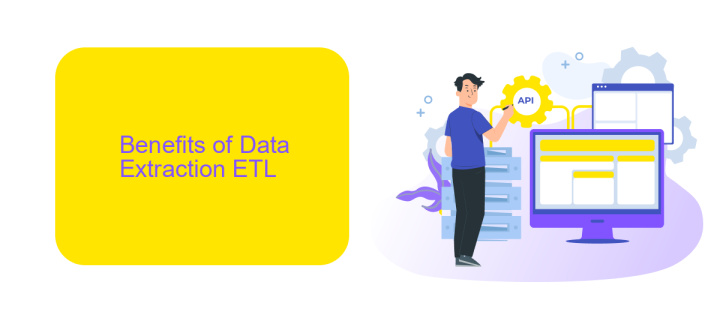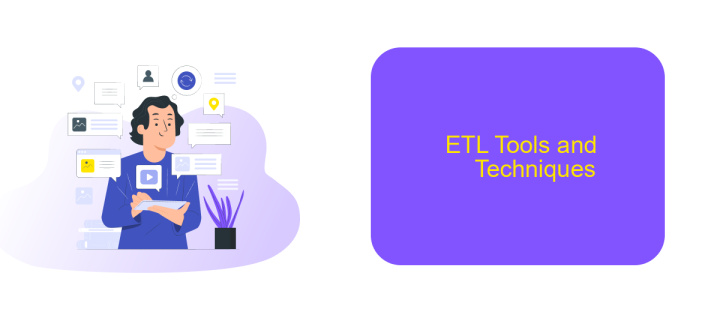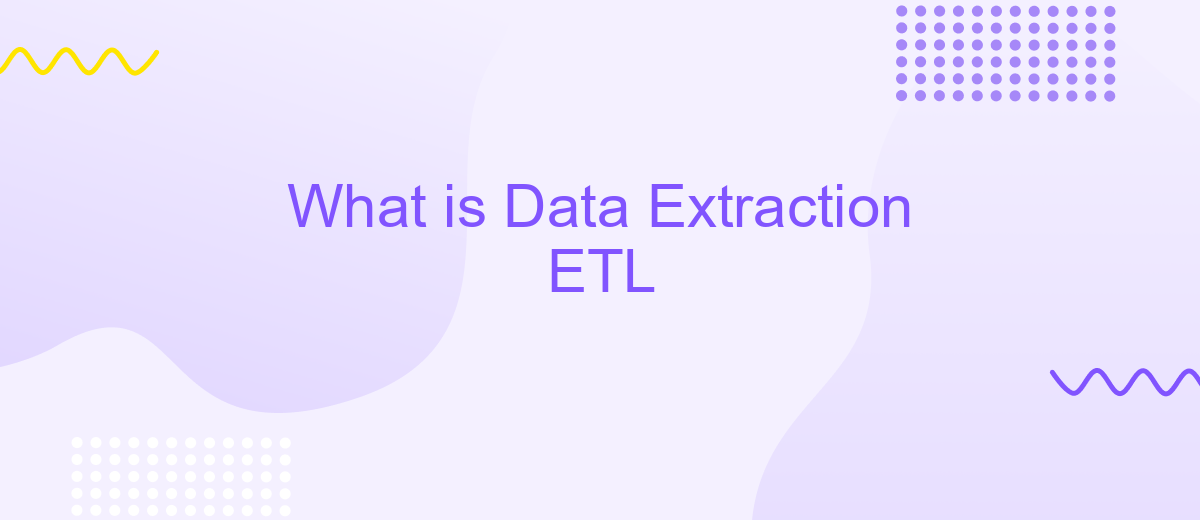What is Data Extraction ETL
Data extraction is a crucial step in the ETL (Extract, Transform, Load) process, which involves retrieving raw data from various sources for further processing and analysis. ETL systems are essential for consolidating data from disparate sources, transforming it into a usable format, and loading it into a data warehouse or other storage solutions. This article explores the fundamentals of data extraction in ETL workflows.
Introduction: Data Extraction, Transformation, and Loading (ETL)
Data Extraction, Transformation, and Loading (ETL) is a crucial process in data management that involves extracting data from various sources, transforming it into a suitable format, and loading it into a target database or data warehouse. This process ensures that data is accurate, consistent, and usable for analysis and decision-making.
- Data Extraction: Collecting data from multiple sources such as databases, APIs, and flat files.
- Data Transformation: Converting the extracted data into a format that meets the requirements of the target system.
- Data Loading: Inserting the transformed data into a database or data warehouse for further use.
ETL processes can be complex and time-consuming, but tools like ApiX-Drive simplify the integration and automation of these tasks. ApiX-Drive allows businesses to connect various data sources and automate the ETL workflow, ensuring efficient and reliable data management. By leveraging such services, organizations can focus on analyzing data and deriving insights rather than dealing with the intricacies of data integration.
Benefits of Data Extraction ETL

Data Extraction ETL (Extract, Transform, Load) offers numerous benefits for businesses looking to manage and utilize their data effectively. One of the primary advantages is the ability to consolidate data from various sources into a single, unified view. This centralization facilitates better data analysis and reporting, enabling companies to make informed decisions quickly. Additionally, ETL processes ensure data quality and consistency by cleaning and transforming data before loading it into the target system, which reduces errors and enhances reliability.
Another significant benefit is the automation of data workflows, which saves time and reduces manual effort. Tools like ApiX-Drive can streamline the integration process, allowing businesses to connect different applications and services seamlessly. This automation not only increases efficiency but also ensures that data is updated in real-time, providing accurate and timely insights. Furthermore, ETL processes can be scaled to handle increasing volumes of data, making them a robust solution for growing businesses. By leveraging Data Extraction ETL, companies can improve operational efficiency and gain a competitive edge in the market.
Challenges in Data Extraction ETL

Data extraction in ETL processes presents several challenges that can impede the efficient transformation and loading of data. These challenges often stem from the complexity and variety of data sources, as well as the need for accurate and timely data integration.
- Data Quality: Ensuring the accuracy and consistency of data extracted from multiple sources can be difficult, leading to potential errors in the ETL process.
- Data Volume: Handling large volumes of data requires robust infrastructure and can be time-consuming, impacting the overall performance of the ETL pipeline.
- Data Integration: Integrating data from diverse sources with different formats and structures can be challenging. Tools like ApiX-Drive can help streamline this process by automating data integration.
- Real-Time Processing: Achieving real-time data extraction and processing requires advanced technologies and can be resource-intensive.
- Security: Protecting sensitive data during extraction and transfer is crucial, necessitating strong encryption and compliance with data protection regulations.
Addressing these challenges requires a combination of advanced tools, strategic planning, and ongoing monitoring to ensure the ETL process is efficient and reliable. Utilizing services like ApiX-Drive can significantly reduce the complexity of data integration, allowing for smoother and more accurate data extraction.
ETL Tools and Techniques

ETL (Extract, Transform, Load) tools and techniques are essential for efficiently managing and processing large volumes of data from various sources. These tools automate the process of extracting raw data, transforming it into a usable format, and loading it into a data warehouse or other storage systems. By leveraging ETL tools, organizations can ensure data consistency, accuracy, and accessibility for decision-making processes.
There are numerous ETL tools available in the market, each offering unique features and capabilities. These tools can be categorized into open-source solutions, commercial software, and cloud-based services. When selecting an ETL tool, it is crucial to consider factors such as ease of use, scalability, integration capabilities, and cost.
- Open-source tools: Talend, Apache Nifi, Pentaho
- Commercial software: Informatica, Microsoft SSIS, IBM DataStage
- Cloud-based services: ApiX-Drive, AWS Glue, Google Dataflow
ApiX-Drive is particularly useful for setting up integrations between various applications and services without requiring extensive coding knowledge. It simplifies the automation of data workflows, enabling businesses to streamline their ETL processes effectively. By utilizing tools like ApiX-Drive, organizations can enhance their data integration capabilities and focus on deriving actionable insights from their data.
Best Practices for Data Extraction ETL
To ensure efficient and accurate data extraction in ETL processes, it's crucial to implement best practices. Start by defining clear data requirements and objectives, which will guide the entire extraction process. Utilize robust data profiling techniques to understand the structure, quality, and consistency of your data sources. This helps in identifying any anomalies or inconsistencies that need to be addressed before extraction.
Leveraging automated tools like ApiX-Drive can significantly enhance the efficiency of your data extraction process. ApiX-Drive offers seamless integration capabilities, allowing you to connect various data sources effortlessly. Additionally, ensure that you maintain data security and compliance by implementing encryption and access control measures. Regularly monitor and update your ETL processes to adapt to changing data environments and requirements, ensuring that your data extraction remains reliable and efficient.
FAQ
What is Data Extraction in ETL?
Why is Data Extraction important in ETL?
What are some common data sources for Data Extraction?
How can I automate the Data Extraction process?
What challenges might I face during Data Extraction?
Do you want to achieve your goals in business, career and life faster and better? Do it with ApiX-Drive – a tool that will remove a significant part of the routine from workflows and free up additional time to achieve your goals. Test the capabilities of Apix-Drive for free – see for yourself the effectiveness of the tool.

